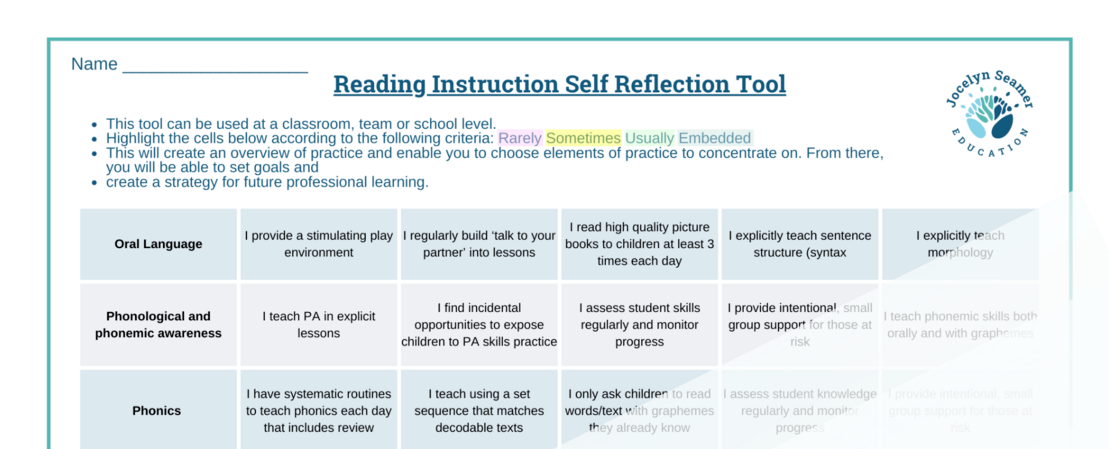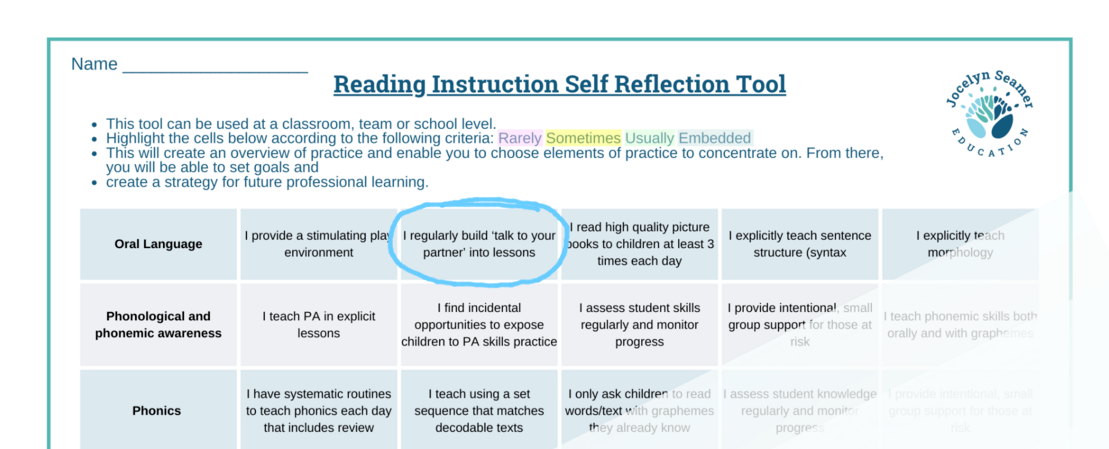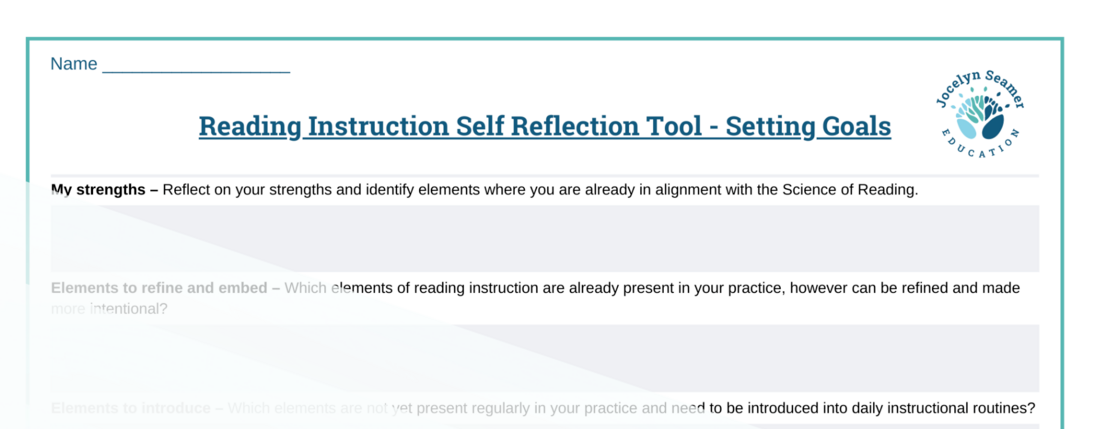Effective reading instruction may be closer than it appears

We hear ‘Science of Reading’ and ‘evidence-based practice’ so often that it can start to feel like living up to the ideal is some kind of unattainable goal that we will never achieve in our classrooms. After all, we are hard pressed to get to the toilet without having to move at superhero speed. How are we supposed to have the head space and time to completely change the way we teach? You might be thinking, “Isn’t it unrealistic to expect the super-human effort necessary to be a 6/6 in evidence-based reading instruction?"

Here is something that I know about you. When it comes to super-human, you are already there. When it comes to caring about your students and having a genuine drive to make better choices for them, you are already there.
Here is something else that I know about your teaching. You are not at 0/6 in any of the areas that makes the biggest difference for students. Not one. In this post I would like to help you work through a mini self-evaluation so that you can see that you may not have as far to go as you think you do. You are, quite possibly, closer to the 6/6 than you think.
A few blog posts back I shared this self-reflection tool with you.

Let’s use this today to frame some of your thinking about how close you actually are to delivering reading instruction according to the evidence.
Firstly, I want to ask you to engage in a little bit of mindset shifting. When we are about to undertake a challenge, it is important to know that the doubtful voices in our heads are a normal part of learning. Our job is to catch and redirect them. When my doubtful voices pay a visit, I put on my best internal teacher voice and say, “Nope. Sorry. We are not thinking like that today.” Treating my unhelpful mindset as a mischievous school-aged child really does help!

The redirect part comes in the form of recasting. So, when the doubtful voices present unhelpful messages, we simply recast them into a much more positive message that we are can then actively choose to engage with.
To recast, try this:
Use future focused language:
“When I…”
“Once I have ________ in place, I will be able to________”
“Things are feeling tricky right now, but by __________ I will be able to __________”
Support yourself the way you support others.
If another teacher was feeling discouraged, you would be unlikely to say, ‘Yes, you are right. You really are dumb and the fact that everyone else seems to know more than you is a sure sign you have wasted your 4 years at university and should try a different job’.
Instead, you would probably say something like, “I know it feels hard right now, but I’m telling you, you can do this. We are going to get there together! It might look like everyone else knows more than you, but I can tell you that you know more than you think. Everyone started somewhere. You don’t have to do it all today. Take one step at a time!”
Focus on positive action
There is no better way to overcome your doubts than to take positive action. Whenever I have felt like everything was getting away from me and my hopes were sure to end in dismal failure, I have been helped by taking small steps that got me a little closer to the goal I was trying to achieve.
So, your recasting might sound like this – “Wow, things are feeling tricky right now. One small positive action that I can take to help me achieve my goal is ……” And then DO IT. It doesn’t matter if that positive action is preparing some magnetic letters into sets to teach your foundation students or using post-it notes to group your class according to their phonics knowledge. ANY action you take will have a ripple effect on your teaching and your mindset.
Positive Actions to Get you Moving
Now that we have the mindset sorted out (we all know that is a lifelong work in progress!), let’s look at what some positive actions might be that can get you closer to teaching reading according to the science. I can’t unpack the whole evaluation in this post (but it occurs to me that this could be a good topic for a Teach Along!), but I will touch on one point to give you an idea of the kind of simple actions you can take.

Example - I regularly build ‘Talk to Your Partner’ into lessons
If children are not used to doing this, it can be unrealistic to think that you are going to tell them to talk with each other about the content you just presented and they will produce stimulating, insightful conversation. To lead up to this level, teach the following:
- Call and response – This ensures that children know that there are expectations for the way they engage in the classroom.
- Sitting knee to knee – actively teach children to fully turn their bodies around to face their partners and sit knee to knee (I understand that this may be difficult in places with active COVID related restrictions).
- Look at the person who is speaking – draw children’s attention to the fact that conversation is a two-way street. Eye contact is a cultural expectation in our society when we speak with others.
- Repeat what your partner just said – teaches children to actively listen. A simple thing? Yes! A habit for all children? No.
- Taking turns to speak – teach children that partner number one is perhaps closer to the door and partner number two is closer to the teacher desk (or whatever works in your context). Teach them to identify who partner number one and partner number two are by raising their hands.
- Scaffold the content of the ‘talk to your partner’ by providing prepared responses to start with, then identifying literal information to talk about and then move on to the nuanced, inferential conversations (just like Blanks Questions).
There are 6 teaching actions here you can undertake. Every time you teach one of them, you and your students are a step closer to the ideal teaching you are aspiring to. Remember, you don’t have to eat the whole elephant at once! Focus on one thing at a time as you move your practice closer to what you are aiming for.
How to use the Self-Reflection
The self-reflection (available for download below) is designed to help prompt your thinking about your teaching. It is not an opportunity to beat yourself up or criticise. Completing the reflection (with colour coding) is a great way to identify your starting point for the year. The 2nd page of the reflection, is where the magic happens because this is where you start to make some real plans for yourself and get ready to take action. Work through each question, answering to the best of your current knowledge. Things will change as the term or year progresses and your goals will too.

Having a ‘can-do’ mindset is not about pie in the sky ‘build it and they will come’ ideals. It is about knowing where you are, where you want to be and being clear about the action you can take to get you and your students set up for success.


 Jocelyn Seamer Education
Jocelyn Seamer Education
0 comments
Leave a comment